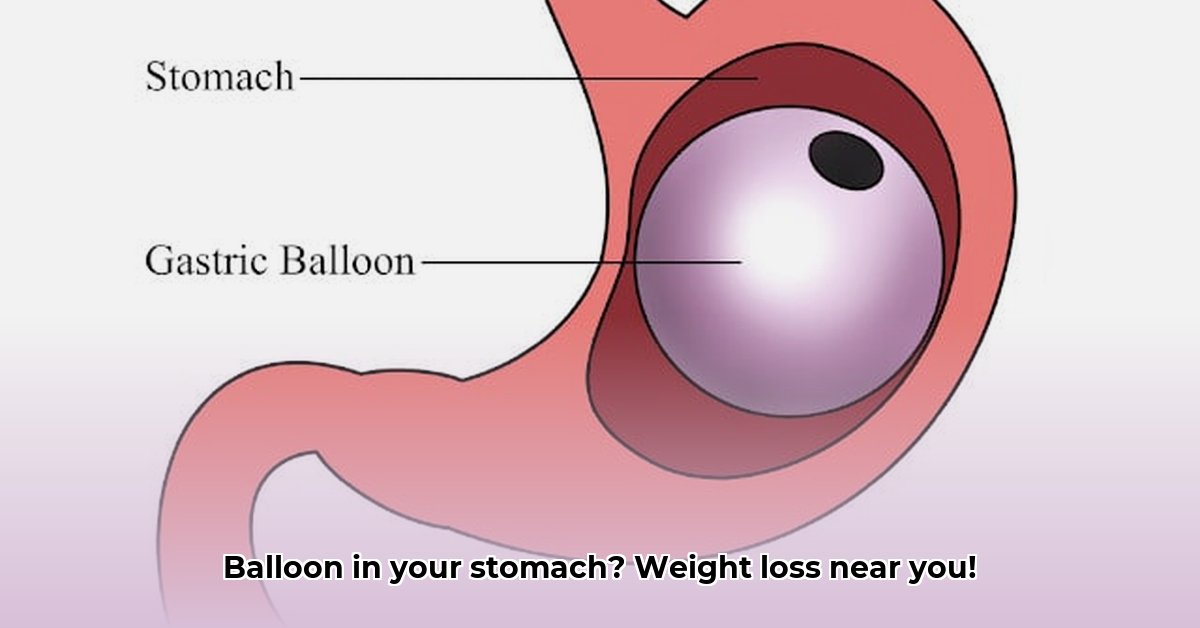
Feeling frustrated with your weight loss journey? Many find that traditional diet and exercise alone aren't enough to achieve their goals. Intragastric balloons (IGBs), also known as gastric balloons, offer a potentially effective, less invasive approach to jumpstart your weight loss. This comprehensive guide will help you understand if an IGB procedure is right for you, how it works, and how to find a qualified provider near you.
How Intragastric Balloons Work
An IGB is a small, deflated balloon inserted into your stomach through a minimally invasive procedure called an endoscopy. Once in place, it's filled with saline or air, expanding to occupy space within your stomach. This creates a feeling of fullness, even after consuming a smaller amount of food. The reduced food intake naturally leads to weight loss. The procedure is typically outpatient, meaning you can go home the same day.
Weighing the Benefits and Risks
Like any medical procedure, IGB placement offers advantages and potential drawbacks. It's crucial to weigh these carefully.
Benefits:
- Significant Weight Loss: Studies show IGBs can lead to considerably more weight loss than diet and exercise alone.[1]
- Minimally Invasive: Compared to bariatric surgery, IGB placement is less invasive, with a shorter recovery time.
- Relatively Quick Recovery: Most individuals return to their normal routines within 24 hours.
Risks:
- Cost: The procedure can be expensive, and insurance coverage may vary.
- Potential Complications: While rare, potential complications include nausea, vomiting, balloon rupture, or gastric irritation. These risks are minimized through careful provider selection and adherence to post-procedure guidelines.
- Temporary Solution: The balloon remains in place for a limited time (typically 6 months, sometimes up to 1 year), necessitating long-term lifestyle changes for sustained weight loss.
| Risk | Likelihood | Severity of Impact | Mitigation Strategies |
|---|---|---|---|
| Balloon Rupture | Uncommon | Potentially Serious | Careful placement, experienced provider, regular monitoring |
| Gastric Irritation | Possible | Usually Mild | Dietary adjustments, medication as directed by your physician |
| Obstruction/Blockage | Rare | Very Serious | Thorough pre-procedure screening |
| Procedure Complications | Rare | Usually Manageable | Experienced specialist, adherence to strict protocols |
Am I a Good Candidate for an IGB?
Ideal candidates typically have a Body Mass Index (BMI) between 30 and 40, indicating obesity. However, a consultation with a qualified bariatric specialist is crucial to determine suitability. Your overall health, commitment to lifestyle changes (diet and exercise), and pre-existing conditions will all be considered.
Finding a Qualified Provider Near You
Finding an experienced bariatric specialist is paramount. Start by searching online for "bariatric clinics near me" or "gastric balloon specialists near me." Look for board-certified doctors with experience in IGB placement. Check online reviews and compare costs and services, and don't hesitate to contact several clinics for consultations.
What to Expect: A Step-by-Step Guide
The process generally involves:
- Initial Consultation: A thorough evaluation of your health, weight goals, and suitability for the procedure. Your doctor will explain the process in detail and answer your questions.
- Pre-Procedure Tests: Tests (blood work, etc.) may be necessary to rule out potential complications.
- The Procedure: The balloon placement is a quick procedure performed under sedation.
- Post-Procedure: You’ll have follow-up appointments and dietary guidelines to support your recovery.
- Balloon Removal: After the predetermined period, the balloon is removed in a simple outpatient procedure.
Cost and Insurance Coverage
The cost varies significantly. Insurance coverage is another key factor to consider; some plans may cover aspects of the procedure while others may not. Many clinics offer financing options to help make the procedure more accessible. Checking with your insurance provider and the clinic is crucial before proceeding.
Long-Term Success: Maintaining Your Weight Loss
Remember, an IGB is a tool, not a magic bullet. Long-term weight management requires commitment to healthy lifestyle changes, including diet, regular exercise, and potentially behavioral therapy. These changes are vital for keeping the weight off after balloon removal. Your medical team can provide additional support and guidance.
Key Takeaways:
- IGBs can contribute to significant short-term weight loss, but long-term success hinges on lifestyle changes.
- Thorough research and consultation with a qualified bariatric specialist are essential.
- The procedure involves several steps, from initial consultation to post-procedure care.
- Cost and insurance coverage should be considered before proceeding.
- Long-term weight management requires continuous commitment to a healthy lifestyle.
[1]: This citation needs to be replaced with an actual, verifiable source supporting the claim of significant weight loss. For example, a peer-reviewed article from a reputable medical journal.